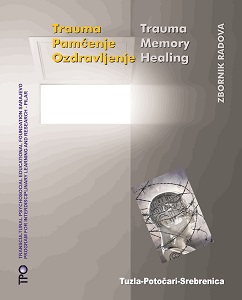A Home Far from Home: Bosnian Refugees in St. Louis, Missouri
A Home Far from Home: Bosnian Refugees in St. Louis, Missouri
Author(s): Patrick McCarthy
Subject(s): Sociology, Social history, Studies in violence and power, Migration Studies
Published by: Transkulturna Psihosocijalna Obrazovna Fondacija (TPO Foundation)
Keywords: St. Louis; Missouri; BiH; Bosnia; refugees;
Summary/Abstract: On a warm March day in 2006, a delegation of new Americans was ushered into the office of the Mayor of the City of St. Louis, the Honorable Francis G. Slay. Mayor Slay stood in the doorway of his office, greeting each guest by extending his hand saying, “Dobro došli!” – “Welcome!” –in the Bosnian language. Thirteen years earlier, in 1993, Bosnian refugees had begun arriving in this quiet Midwestern city in the United States in numbers that would eventually become one of the largest Bosnian communities outside of Bosnia‐Herzegovina, estimated today at nearly 50,000 persons (Larsen, 2014). The meeting with the Mayor was one acknowledgement of the positive effect of the large‐scale Bosnian‐Herzegovinian resettlement in St. Louis. In decaying neighborhoods where Bosnians had resettled, property values were rising, housing infrastructure was improving, and communities stabilizing – all attributed to this large and growing presence of refugees from the former Yugoslavia (Tucci, 1999). In welcoming these new Americans, Mayor Slay also recognized the potential political power of the Bosnian‐Americans as a voting block, as did elected officials at every level of local, state, and even national government in the United States (Montagne, 2004). In turn, Bosnians, who had organized themselves into a United Bosnian Association, were becoming more aware of their political and economic leverage in a city with declining populations and dwindling tax revenues (Vulliamy, 2012). The meeting with the Mayor signaled that Bosnians had truly “arrived” in St. Louis and were no longer viewed as dependent refugees but as productive, contributing city residents who were helping to reshape and revitalize the urban core of a major metropolitan city (Tomich, 2005).
Book: Trauma, pamćenje, ozdravljenje
- Page Range: 153-158
- Page Count: 6
- Publication Year: 2014
- Language: English
- Content File-PDF

